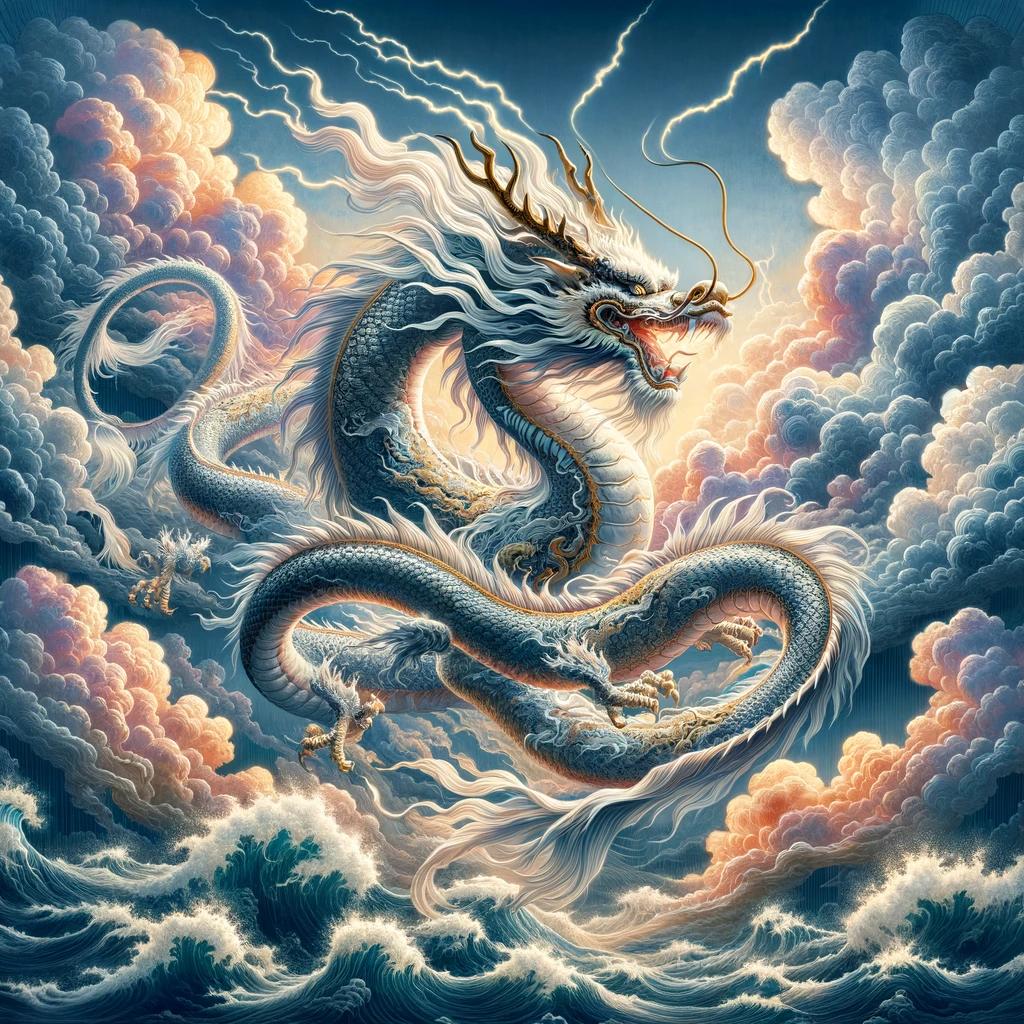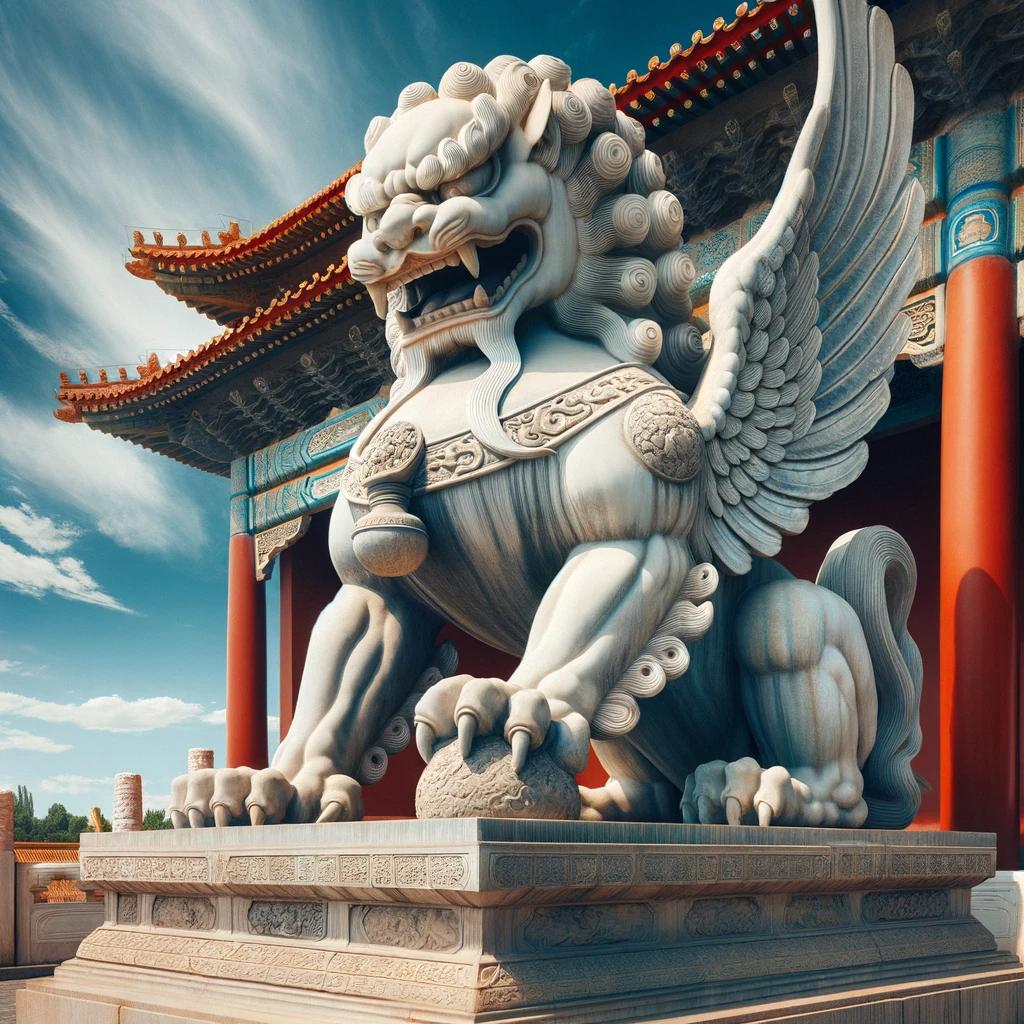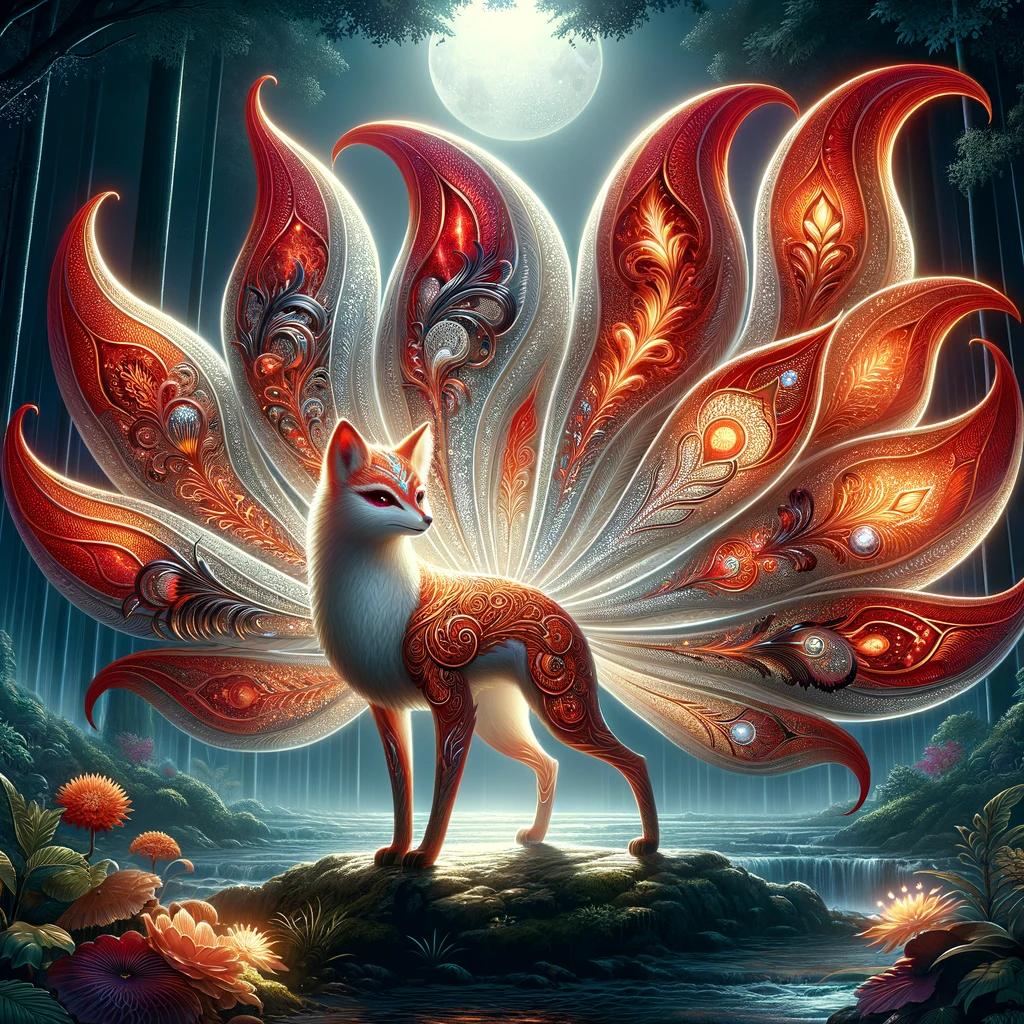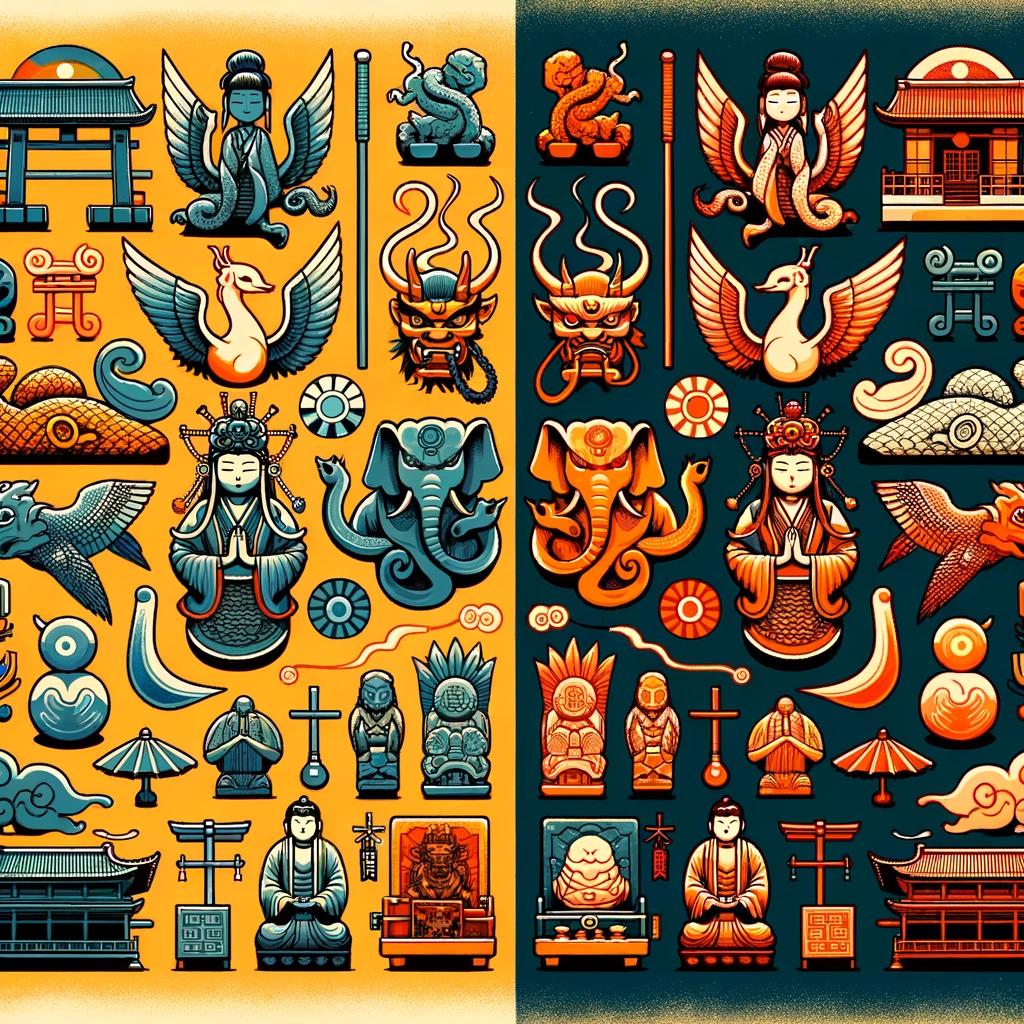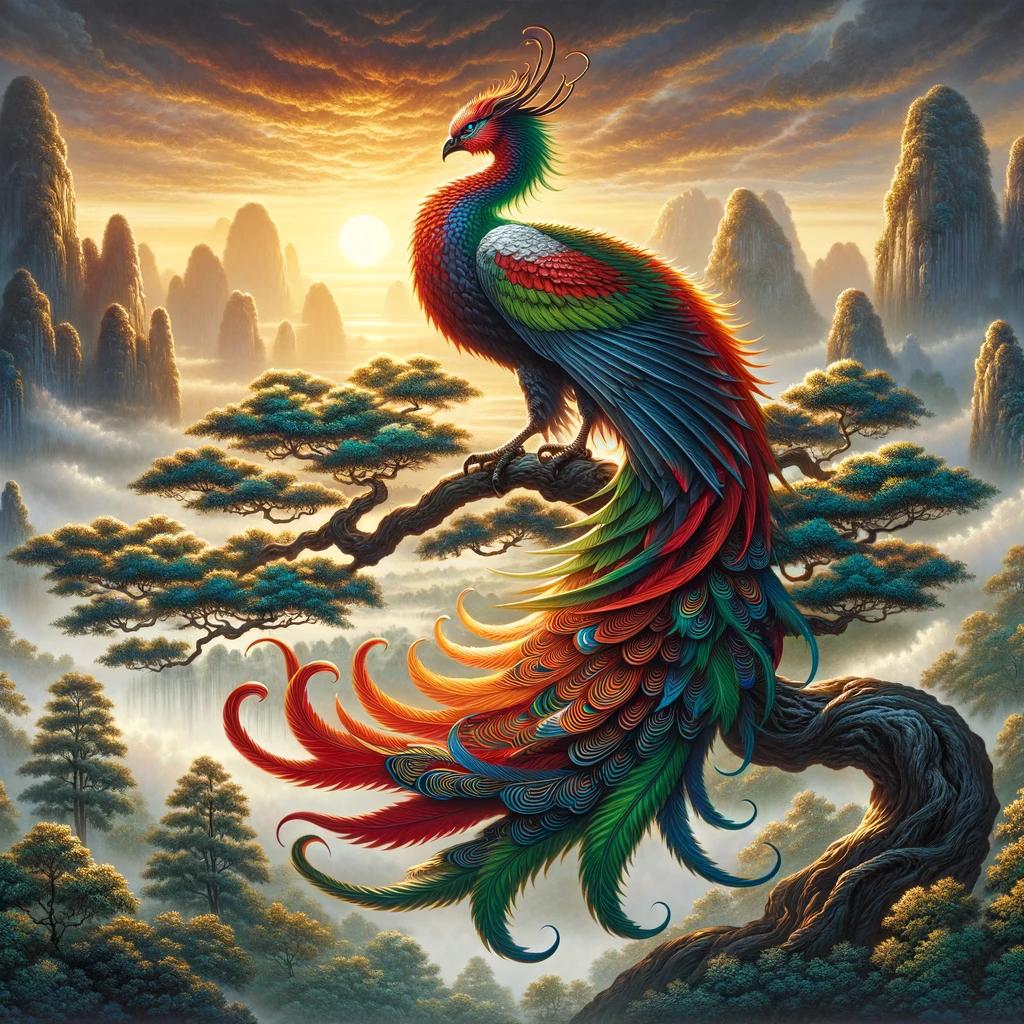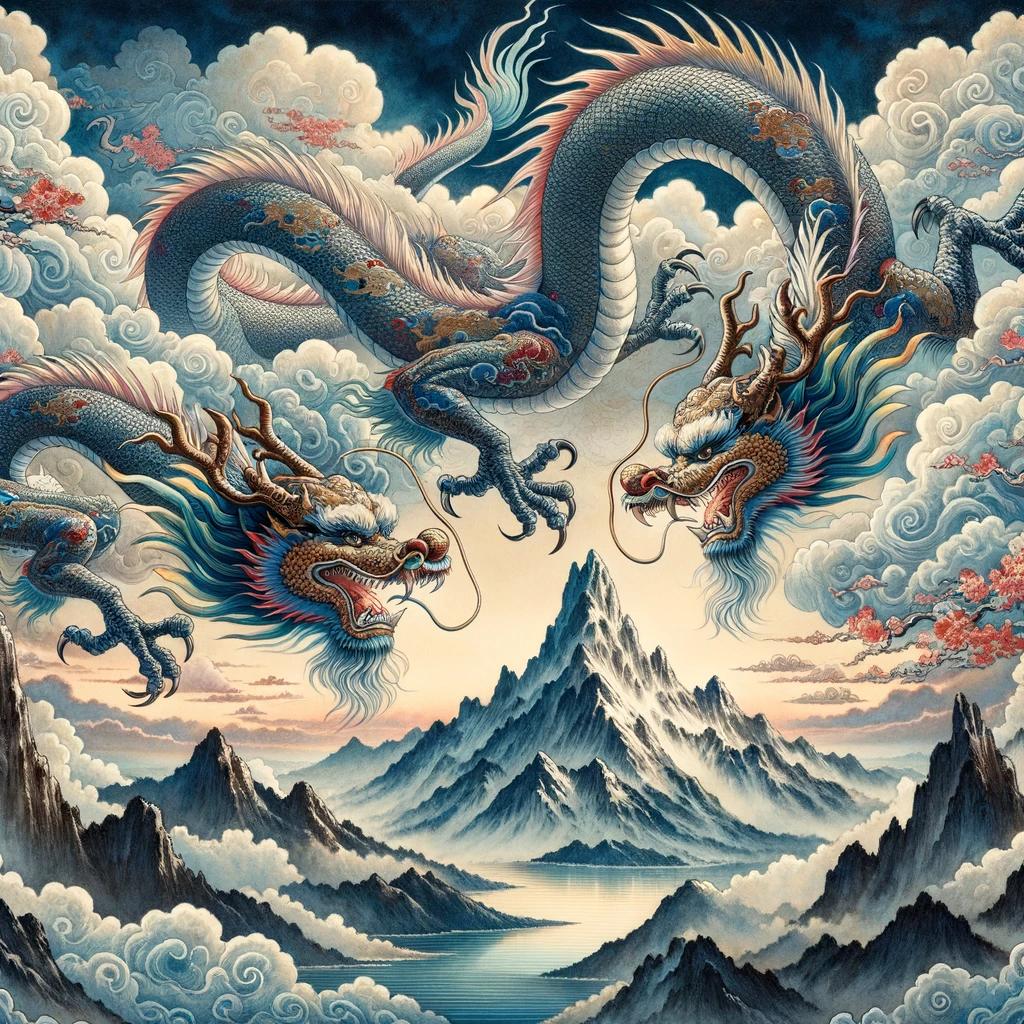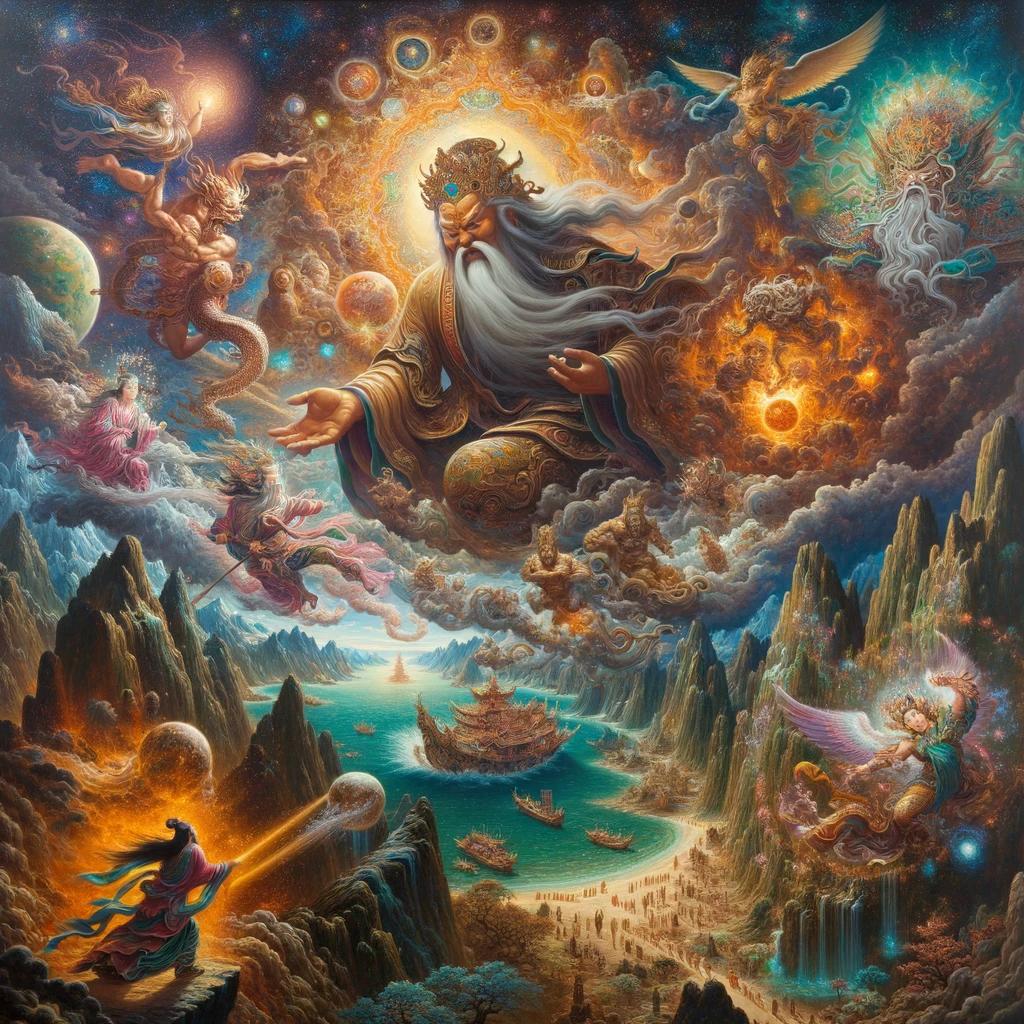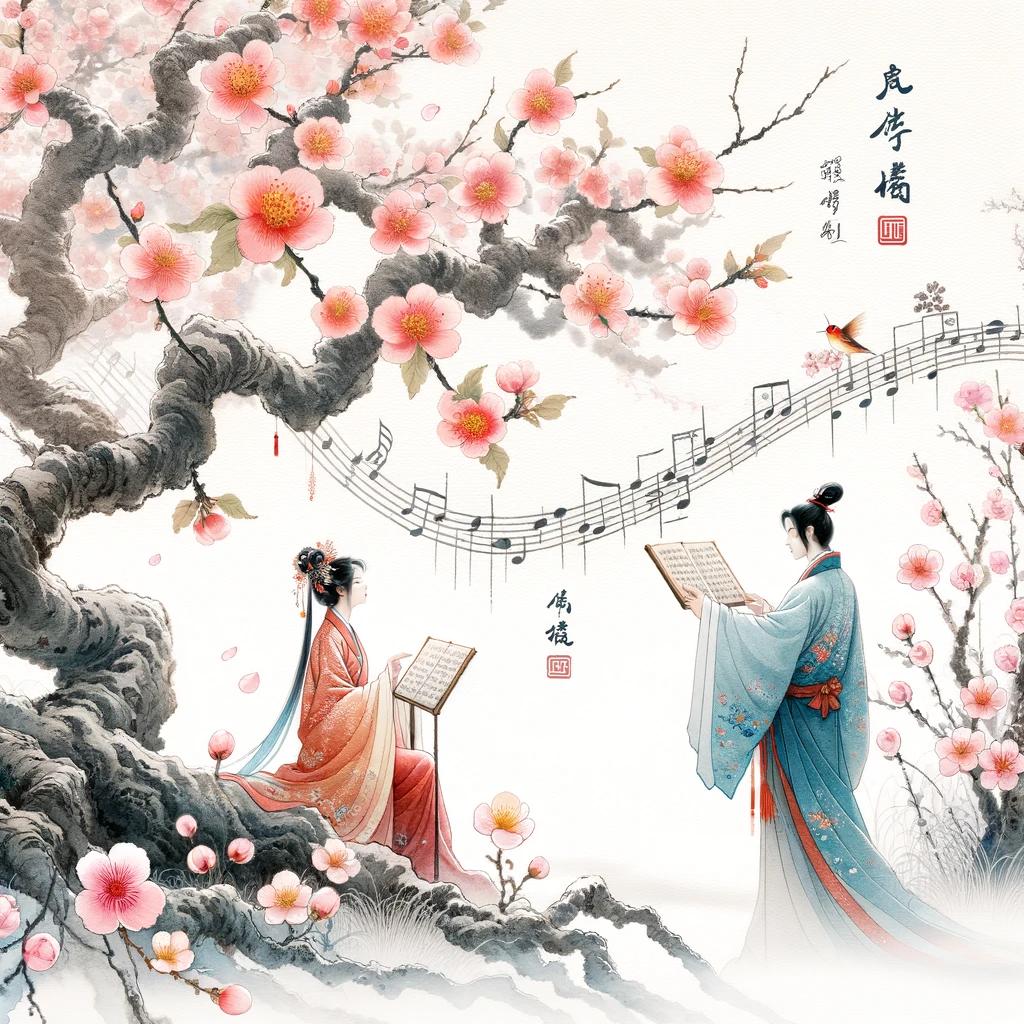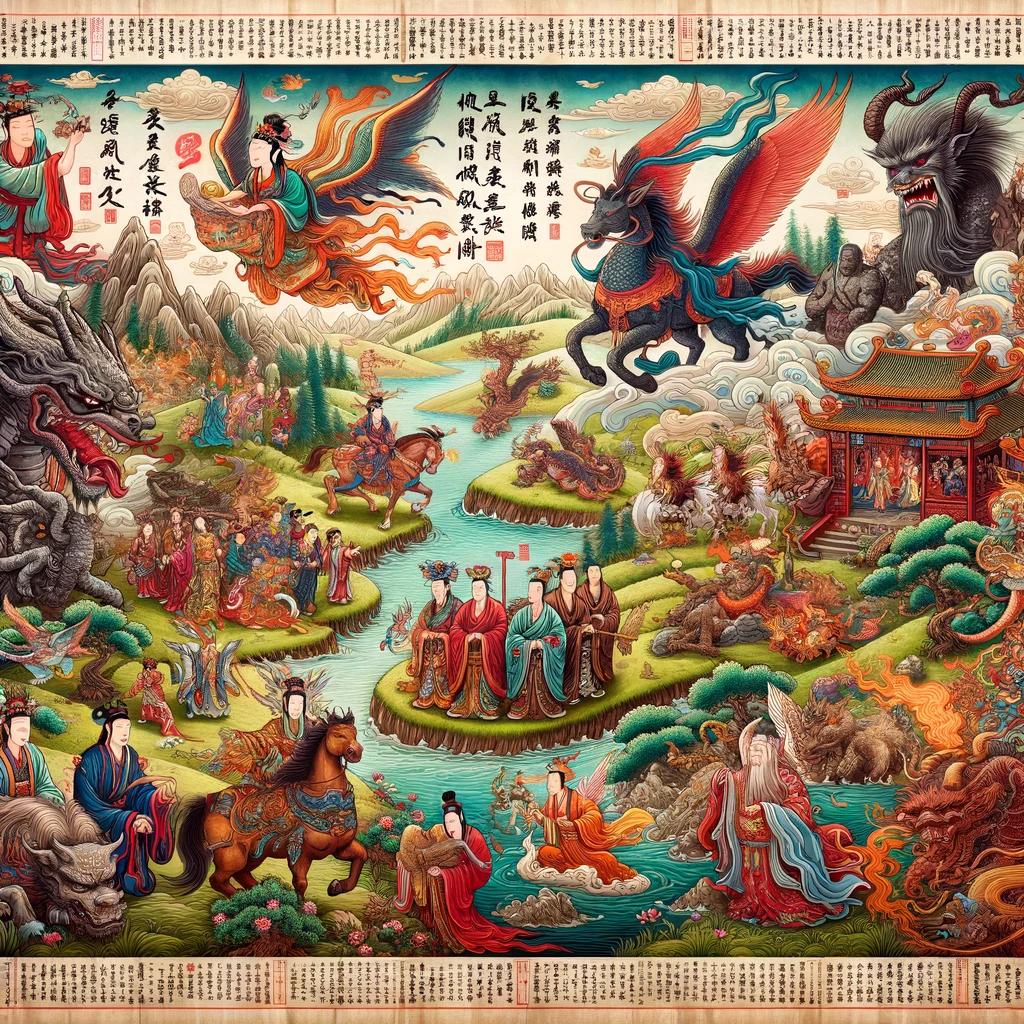The Mystical Shenlong Dragon: Guardian of the Celestial Balance
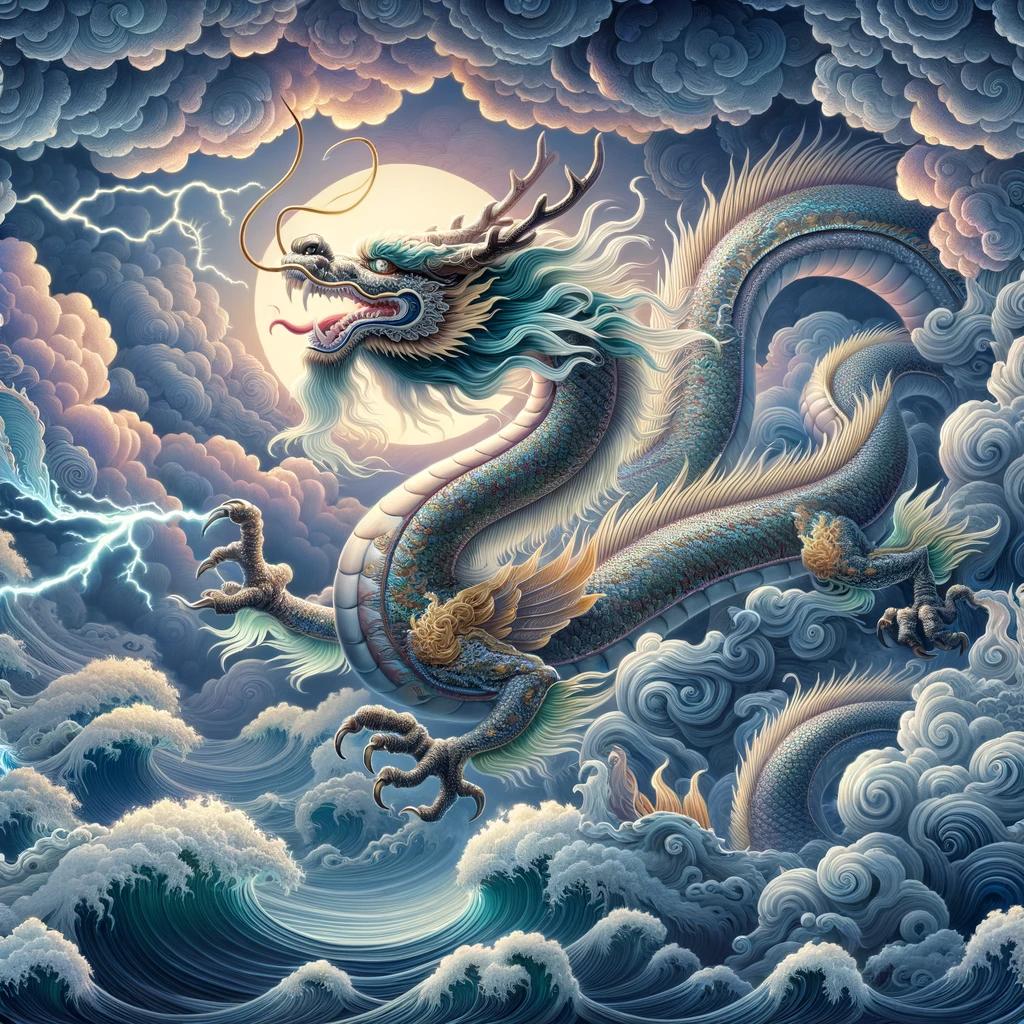
In Chinese mythology, the Shenlong Dragon, a celestial dragon revered for its divine prowess, holds significant power over storms and rainfall. This god dragon, or ‘Shen-long’, is esteemed alongside other spiritual creatures and is instrumental in governing the wind, clouds, and rain, crucial for mitigating bad weather or drought conditions.
With its five claws representing imperial status, Shenlong is deeply ingrained in Chinese culture and history, associated with the lavish regalia of emperors. Its influence on agricultural life, festivals, and superstitions further exemplifies its importance to society, embodying the essence of the spiritual and the divine.
However, caution is urged not to offend Shenlong, as this dragon from Chinese mythology can unleash adverse weather conditions, impacting society and the natural balance of the environment. Respect for this spirit dragon underscores the deep-rooted beliefs in the power of nature and the celestial.
The Shenlong Dragon in Chinese Mythology
The Shenlong Dragon holds a significant place in Chinese mythology, captivating generations with its mythical powers and legends. Known also as the ‘Shenlong Chinese dragon’, this majestic creature, famous for its control over storms and rainfall, has been a vital part of Chinese culture and history.
Exploring the origins and legends of Shenlong, as well as its role in Chinese society, provides a deeper understanding of this revered creature.
Origins and Legends of Shenlong
Shenlong’s origins date back to ancient Chinese mythology, where it emerged as a powerful celestial dragon associated with nature’s elements. Legends speak of Shenlong as a divine creature, a celestial dragon governing wind, clouds, and rain, vital for agricultural prosperity.
These tales depict Shenlong as a symbol of strength, wisdom, and the harmony between humans and nature, often referred to as the ‘Shenlong Chinese mythology’ or ‘Shenlong mitologia’. Its narrative enriches the tapestry of dragon mythology, blending the spiritual with the terrestrial.
Shenlong’s Role in Chinese Culture and History
Throughout Chinese history, Shenlong has held a special place in the culture and traditions of the country. Emperors revered Shenlong, associating it with their regal attire and authority. The presence of Shenlong in imperial culture symbolized prosperity, abundance, and the emperor’s divine connection to nature.
Its significance extended beyond the imperial court, permeating festivals, celebrations, and the daily lives of the Chinese people. As the dragon responsible for controlling rainfall, Shenlong played an integral part in ensuring a bountiful harvest and sustaining the livelihood of farming communities.
Its connection to the agricultural cycle made it a revered deity, celebrated and honored through rituals and festivals.
The myths and legends surrounding Shenlong offer insights into the deep-rooted beliefs, traditions, and reverence for dragons in Chinese culture.
It is revered for its spiritual powers and control over essential elements. Additionally, its association with imperial regalia signifies its esteemed status in Chinese culture and history.
Appearance and Five Claws
The Shenlong Dragon, also known as the Shen Long Dragon, is depicted with a majestic appearance, embodying the essence of power and grace. It is often portrayed with a long serpentine body, adorned with colorful scales that glisten in the sunlight.
Notably, Shenlong is distinguished by its five claws, which symbolize its status as the imperial dragon. This unique trait further emphasizes its connection to royalty and authority.
Spiritual Powers and Control over the Elements
Shenlong, revered as a celestial dragon in Chinese mythology, is renowned for its spiritual powers, primarily its ability to govern natural phenomena.
It possesses authority over the wind, clouds, and rain, making it a crucial force in sustaining the balance of nature. Its control over these elements ensures the fertility of the land, making it essential for agricultural prosperity, upon which all agricultural life depends.
This profound influence on the environment, stemming from its control over weather and drought, demonstrates the dragon’s significance and role in Chinese mythology.
Shenlong’s Association with Imperial Regalia
Within Chinese culture, Shenlong is closely associated with imperial regalia, representing its connection to the ruling monarchs. As a symbol of supreme power, the dragon’s presence on the regalia conveys the emperor’s legitimacy and divine authority.
Shenlong’s association with such prestigious symbols further elevates its status and reinforces the dragon’s significance in Chinese history and tradition.
The Importance of Shenlong to Agricultural Life
Shenlong, the powerful spiritual dragon in Chinese mythology, holds immense significance in agricultural life. Through its connection to rain and weather patterns, Shenlong plays a crucial role in sustaining farming and harvests.
Shenlong’s Connection to Rain and Weather Patterns
Shenlong is believed to have control over the elements, including the ability to bring rain. Its role as a guardian of the weather is vital for agricultural success. Farmers rely on Shenlong’s presence and favor to ensure a bountiful harvest.
Impact on Farming and Harvests
Farmers understand the critical importance of Shenlong’s blessings and work in harmony with nature to honor and appease this mighty dragon.
Agricultural communities hold high regard for Shenlong and recognize the grave consequences if it were to be offended or neglected.
Superstitions warn of the potential for droughts, floods, or destructive storms, all of which could bring devastation to crops and livelihoods. It serves as a reminder of the delicate balance between human interactions and the natural forces that govern the agricultural cycle.
Throughout history, festivals and celebrations have been dedicated to honoring Shenlong and expressing gratitude for its contributions to agricultural prosperity. These traditions aim to ensure continued blessings and foster a harmonious relationship between humans and the dragon spirit.
Festivals and Celebrations Honoring Shenlong
Historical and Contemporary Festivals
Shenlong, the revered dragon in Chinese mythology, is commemorated and honored through various historical and contemporary festivals. These festive occasions hold deep cultural and spiritual significance, bringing communities together to pay homage to this powerful creature.
Some notable festivals include:
- Dragon Boat Festival: Celebrated during the 5th day of the 5th lunar month, this festival features dragon boat races, where elaborately decorated boats glide through water to honor Shenlong’s auspicious presence.
- The Lantern Festival: An enchanting celebration held on the 15th day of the first lunar month, where beautiful lanterns are displayed, symbolizing the guiding light of Shenlong and bringing blessings for the year ahead.
- Qingming Festival: Also known as Tomb-Sweeping Day, this festival occurs on April 4th or 5th and holds significance for honoring ancestors.
People offer sacrifices to Shenlong, seeking blessings and protection for their departed loved ones.
Rituals and Traditions
Shenlong’s festivals are rich in rituals and traditions symbolizing prosperity and good fortune. These rituals aim to obtain the favor and blessings of the divine dragon. Some common practices include:
- Dragon Dances: Elaborate dragon dances are performed by trained dancers, emulating the serpentine movements of Shenlong.
These dances are believed to bring good luck and drive away evil spirits.
- Burning Incense: Devotees offer incense as a symbol of their reverence and gratitude towards Shenlong. The fragrant smoke carries their prayers and wishes to the divine realm, seeking blessings for health, wealth, and success.
- Dragon Parades: Colorful processions featuring dragon-shaped floats or costumes are held during festivals, accompanied by music and cheers.
These parades symbolize the presence and protection of Shenlong throughout the celebrations.
These festivals and rituals serve as reminders of the deep-rooted spiritual beliefs and cultural heritage associated with Shenlong, fostering a sense of unity and reverence within Chinese communities, both in the past and the present.
Note: This text is a standalone section of a larger article on ‘Shenlong Dragon Chinese Mythology’ and focuses specifically on the topic of ‘Festivals and Celebrations Honoring Shenlong’.
Beliefs and Superstitions Surrounding Shenlong
Beliefs and superstitions surrounding Shenlong have played a significant role in Chinese culture throughout history.
This section explores the reverence and worship bestowed upon this powerful dragon as well as the fear associated with potentially offending Shenlong.
Reverence and Worship
Shenlong holds a sacred place in Chinese mythology and is revered as a divine being. Many ancient temples were dedicated to worshiping Shenlong, and rituals and ceremonies were performed to pay homage to this mighty dragon.
The people believed that by showing respect and devotion to Shenlong, they could ensure their safety, agricultural prosperity, and overall well-being.
Throughout history, emperors and ruling dynasties revered Shenlong as a symbol of imperial power.
The dragon was often depicted in elaborate artwork and royal regalia, emphasizing the divine and majestic qualities associated with Shenlong.
The worship of Shenlong extended beyond the imperial courts, as ordinary people also sought blessings and protection from this revered dragon.
They would make offerings and prayers to Shenlong during festivals and special occasions, seeking good fortune, rain for their crops, and protection from natural disasters.
Fear of Offending Shenlong
While the reverence for Shenlong was strong, there was also a deep-rooted fear of offending this powerful dragon. The belief held that neglecting or disrespecting Shenlong could result in dire consequences, such as droughts, floods, or storms that could devastate agricultural livelihoods and bring chaos to society.
To avoid arousing Shenlong’s wrath, the Chinese people were cautious not to act in ways that could be perceived as disrespectful. This included refraining from making loud noises or engaging in destructive behavior during festivals or near places associated with Shenlong’s worship.
Superstitions
arose around Shenlong, and people believed that wearing dragon symbols or carrying protective charms would bring good luck and ward off any potential harm caused by the dragon. Even to this day, the reverence and fear surrounding Shenlong’s power and influence persist in certain areas of Chinese culture.
Known in Chinese mythology as a celestial dragon, Shenlong’s name translates to ‘spiritual dragon’ or ‘god dragon’, emphasizing its divine nature. This Chinese spiritual dragon is not only a figure of myth but also a symbol of the harmonious balance and control over the elements, including the power to summon rain or cause droughts.
Shenlong is often compared to other creatures in global mythologies, such as the Japanese dragon or the four celestial dragons in Chinese folklore, known collectively as ‘Tianlong‘. The idea of Shenlong as an eternal dragon with profound meanings attached to its existence is pervasive.
Questions like “Who is Shenlong?” or “What does Shenlong mean?” reflect the deep curiosity and scholarly interest in understanding the essence of this mystical dragon’s role within the broader context of dragon mythology.
In modern culture, the imagery of Shenlong has even permeated popular media, influencing series like “Dragon Ball,” where the concept of an all-powerful dragon granting wishes captures the imagination of audiences worldwide.

